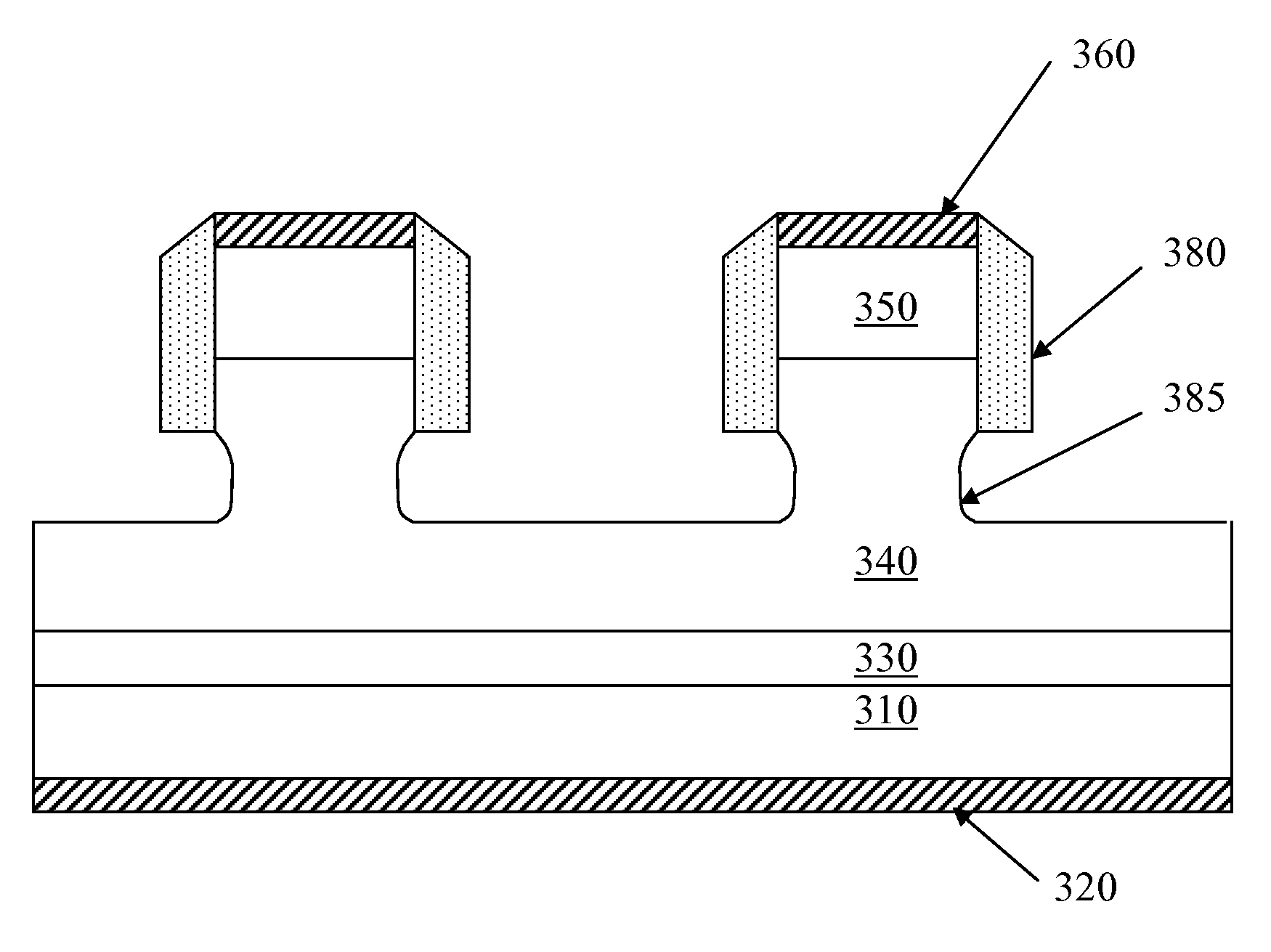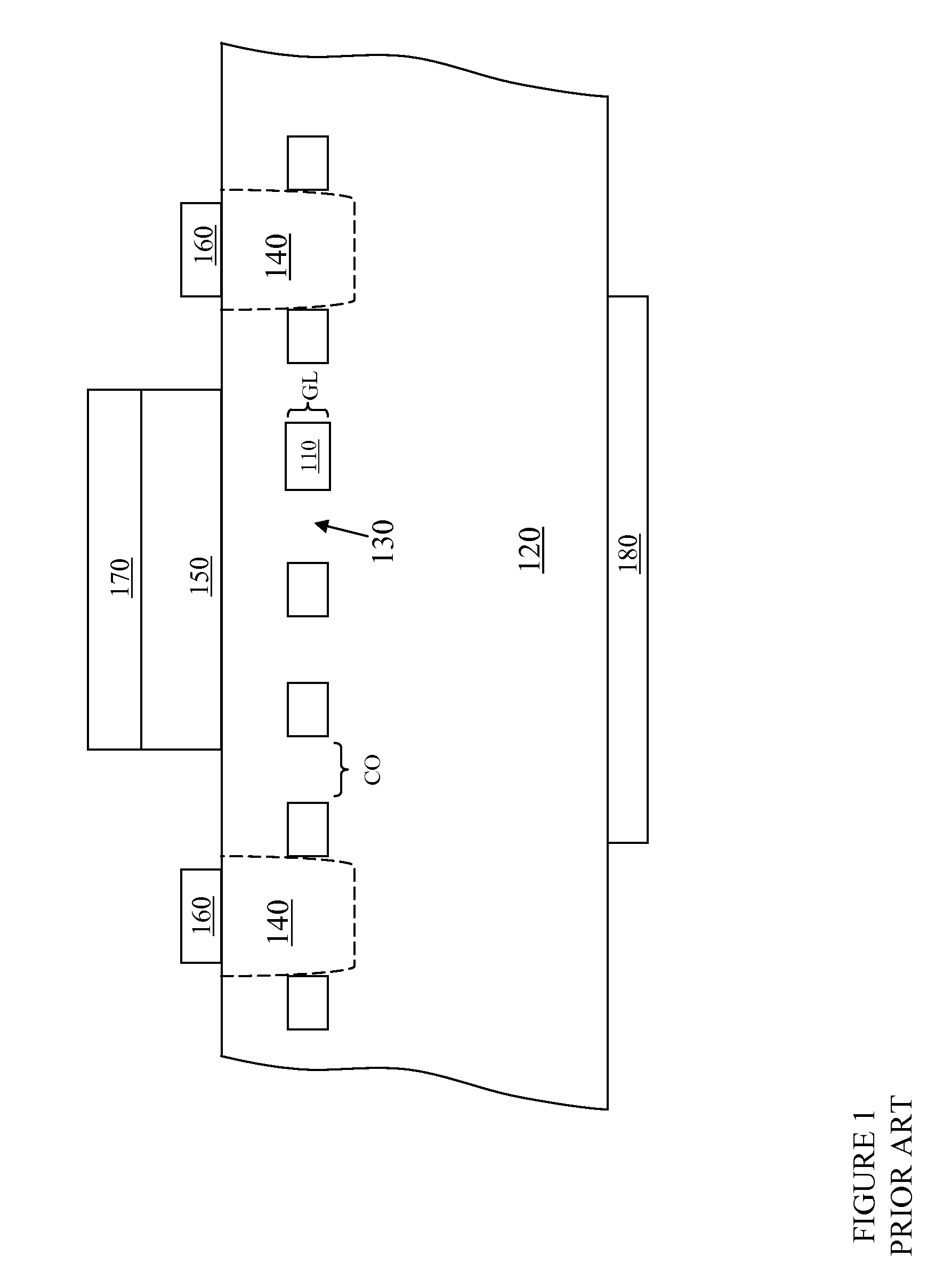Vertical Field-Effect Transistor and Method of Forming the Same
a technology of vertical field effect transistor and transistor, which is applied in the direction of semiconductor devices, basic electric elements, electrical appliances, etc., can solve the problems of limited marketability in view of the presently available silicon-based technology, limiting the applicability of the device in certain situations, and limiting the switching speed and operation as an enhancement-mode devi
- Summary
- Abstract
- Description
- Claims
- Application Information
AI Technical Summary
Benefits of technology
Problems solved by technology
Method used
Image
Examples
Embodiment Construction
[0025]The making and using of the presently preferred embodiments are discussed in detail below. It should be appreciated, however, that the present invention provides many applicable inventive concepts that can be embodied in a wide variety of specific contexts. The specific embodiments discussed are merely illustrative of specific ways to make and use the invention, and do not limit the scope of the invention.
[0026]The present invention will be described first with respect to exemplary embodiments in a specific context, namely, a semiconductor device and, more particularly, a semiconductor device including a vertical FET. A vertical FET is formed with a source contact formed on a substrate (e.g., a source) and a drain contact formed on an opposing surface of the semiconductor device to provide a low on-resistance switch with very fast switching transition times. A metallized gate controls a vertical channel therein. Alternatively, the positions of the source and drain may be rever...
PUM
 Login to View More
Login to View More Abstract
Description
Claims
Application Information
 Login to View More
Login to View More - R&D
- Intellectual Property
- Life Sciences
- Materials
- Tech Scout
- Unparalleled Data Quality
- Higher Quality Content
- 60% Fewer Hallucinations
Browse by: Latest US Patents, China's latest patents, Technical Efficacy Thesaurus, Application Domain, Technology Topic, Popular Technical Reports.
© 2025 PatSnap. All rights reserved.Legal|Privacy policy|Modern Slavery Act Transparency Statement|Sitemap|About US| Contact US: help@patsnap.com



